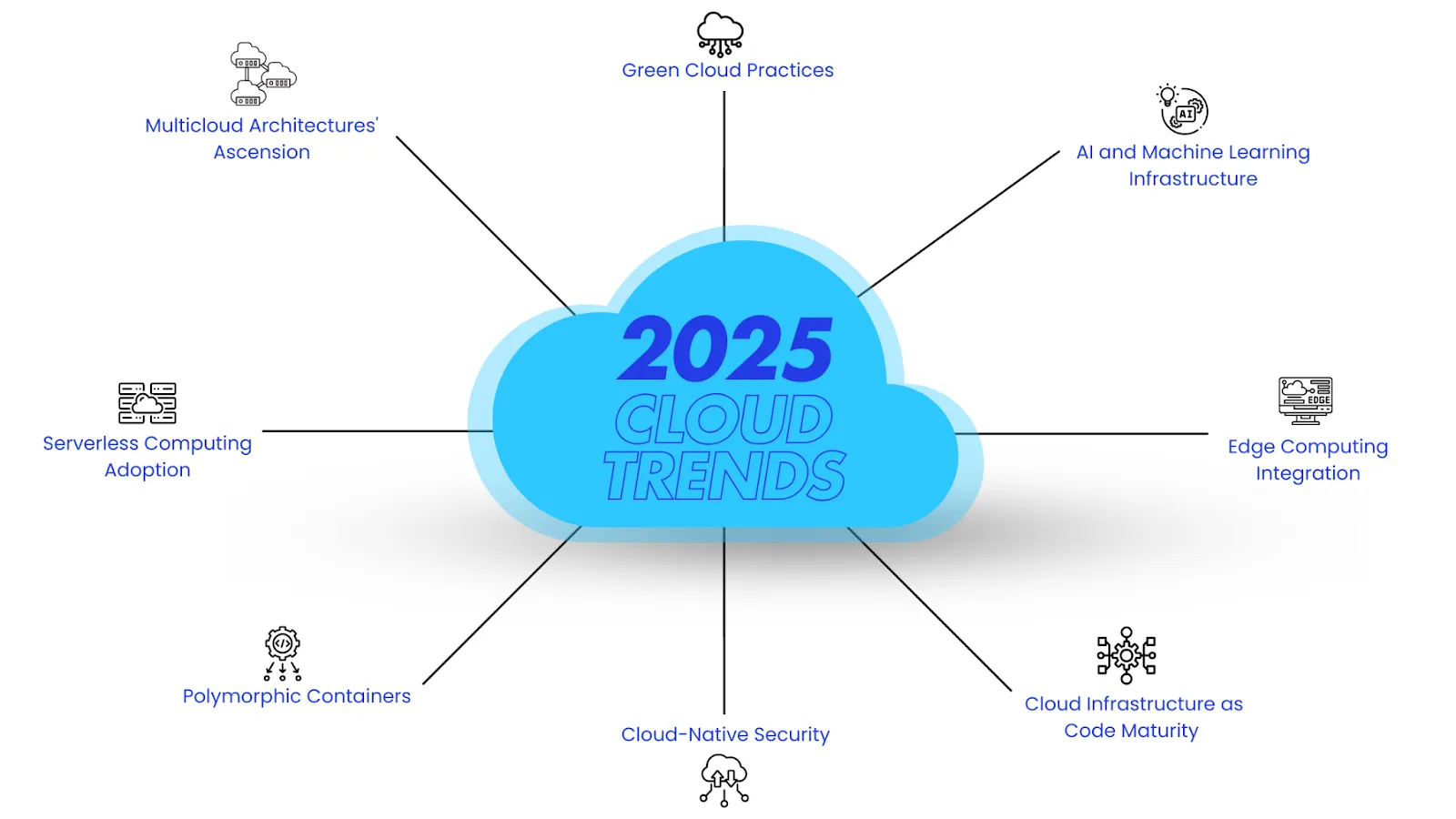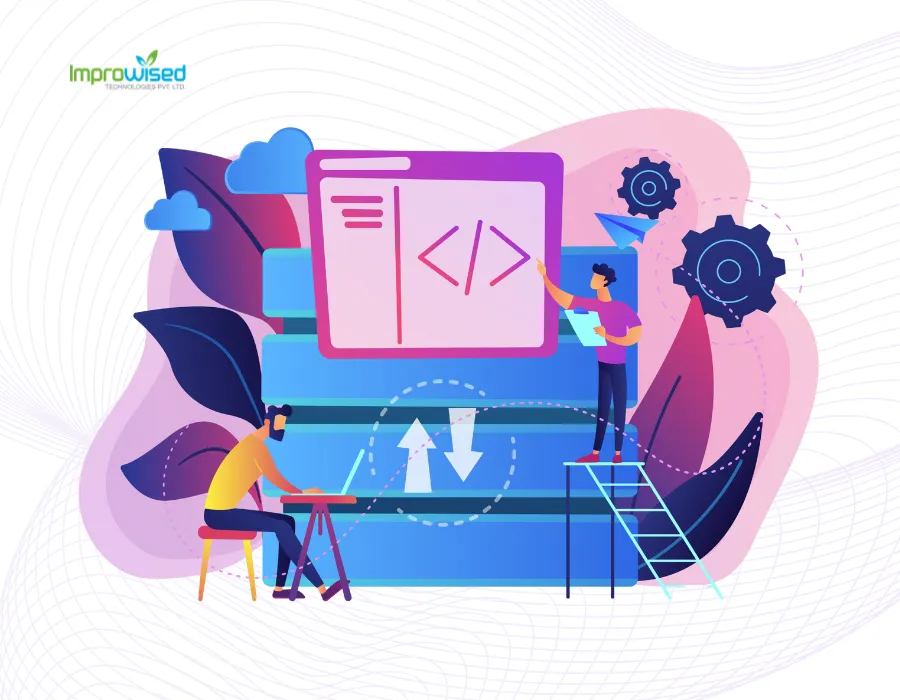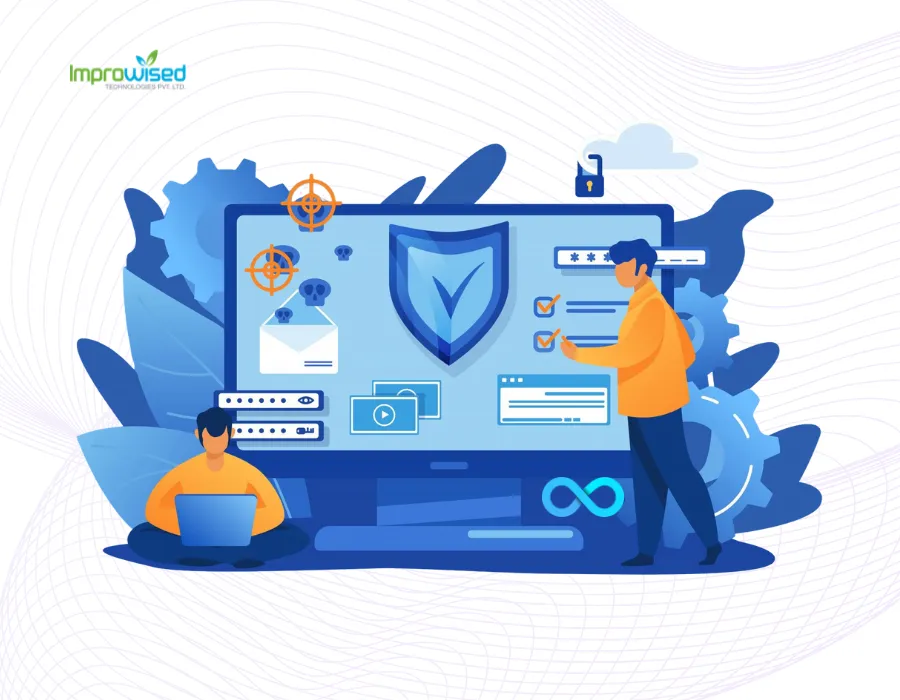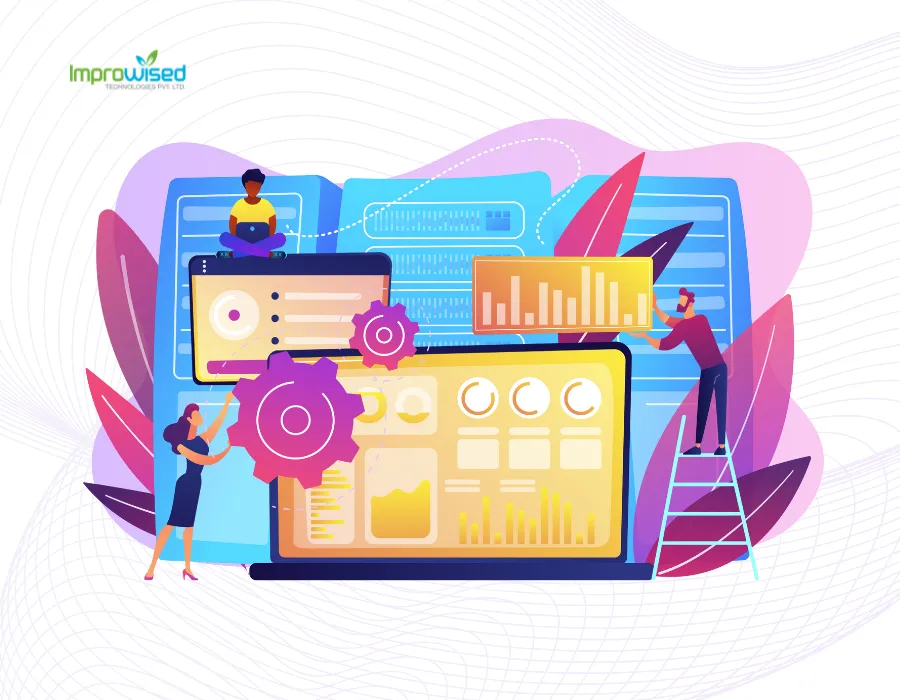January 2, 2025
What Platform Engineers Need to Know About the Most Important Cloud Trends

By Priyank Dhami
Improwised Technologies Pvt. Ltd.
In today’s era, cloud computing is going to be very different. More than 94% of enterprises are expected to depend heavily on cloud infrastructure (Flexera, CloudZero), which means that new ideas are coming up faster than before. The future of the cloud is not only vast, but it is also very closely linked to how platform engineering works. It has AI-powered platforms, multi-cloud techniques, and data processing that happens at the edge.

It’s no longer an option for platform developers to know about these cloud computing developments; they have to. Let’s see in detail:
1. Microservices and Cloud-Native
In the coming future, more than 95% of new workloads will be cloud-native thanks to microservices and containerized deployment methods. It’s not enough to just be able to adapt to this change; you also need to make apps that can manage a lot of traffic and are sturdy. The primary aspects of this movement are Kubernetes, Istio, and serverless frameworks.
Platform engineers need to do more than just set things up and keep an eye on them; they need to plan for growth and failure. Platforms like Backstage and Kratix are also making internal developer portals stronger, which makes them easier to use and keeps things consistent.
2. AI-Powered Cloud Services
AI in cloud computing is no longer simply a buzzword; it’s something that makes firms stand apart. The three main cloud providers, AWS, Azure, and GCP, are integrating AI agents and LLM-based services to make everything from monitoring infrastructure to keeping apps safe better.
There will be a lot more automation services, observability tools, and MLOps links that use AI. Platform teams will have to incorporate smart agents into DevOps pipelines, make sure that AI models are deployed safely, and keep an eye on agentic behaviors as they happen.
3. Plans for Hybrid and Multi-Cloud
According to a projection, 89% of firms will use multi-cloud or hybrid cloud solutions by 2025. Businesses are using this paradigm to avoid being tied to a single provider, speed up data transfer, and meet their data sovereignty needs.
To make polycloud orchestration work across AWS, Azure, Google Cloud, and private infrastructure, platform engineers need to rethink how they conduct networking, IAM (Identity Access Management), and CI/CD. Crossplane and HashiCorp Boundary are two solutions that let you keep track of and organize hybrid workflows.
4. 5G and Edge Computing
Edge computing is increasing at an amazing rate. Only 10% of data was processed at the edge in 2020. That number is predicted to go up to more than 75% by 2025. When 5G is available, edge and cloud collaboration will be needed for real-time, low-latency apps like autonomous systems, IoT, and AR/VR.
Engineers who work on platforms need to get used to decentralized designs, and data gravity will make systems run closer to where the data resides. You can’t choose whether or not to make these distributed systems visible anymore.
5. Green Cloud and Going Green
Sustainability is changing from something we want to something we need. Google and Microsoft, two of the biggest companies in the world, have vowed to construct cloud infrastructure that doesn’t add to carbon emissions or even takes them away by 2030. This is because there is more and more pressure to lower carbon emissions.
Now, companies will care just as much about cloud sustainability as they do about cost. Platform engineers can take the lead by choosing green regions, using as much processing power as possible, and setting workloads that aren’t being used to shut down on their own. Google’s carbon-aware suggestions and Azure’s carbon intensity APIs are two examples of technologies that are at the forefront.
6. Models that don’t need code or a server
Serverless architectures are becoming increasingly popular since they are easy to use and save money. But there are still issues with security, visibility, and being locked into a provider.
For platform teams, letting people use internal low-code/no-code tools means establishing a balance between how quickly they can build things and how well they can keep an eye on governance, compliance, and infrastructure.
7. Quantum Computing and Infrastructure for Better Performance
Quantum computing is relatively new, but it’s starting to change how cloud infrastructure is built. Companies that work in the cloud are already selling quantum simulators that are still in the early stages. These could lead to new techniques to model, optimize, and encrypt data.
At the same time, specialized computing, such as GPUs for AI and DPUs for networking, will revolutionize how infrastructure is developed at hyperscale.
8. No trust and security in the cloud
The cloud is getting more difficult, but it’s also getting more open. Now, cloud security will depend more on Zero Trust architecture, AI-based threat detection, and continuous compliance automation.
It will be very crucial for platform developers to put up secure CI/CD pipelines, implement policy-as-code, and make sure that environments are safe from the start. Regulated firms will also place significant importance on private computing and privacy-focused AI systems.
9. The rise of Neocloud and local service providers
Companies are looking at “neocloud” choices, which are leaner, developer-first providers like Vultr and DigitalOcean. They are also looking into cloud solutions that are only available in select areas to meet compliance and latency concerns.
This approach makes orchestration harder for platform teams, but it also provides them more choices and potentially saves them money. You need cloud-agnostic tools and infrastructure-as-code to deal with this transformation.
10. AI Agents and Cloud Infrastructure for Agents
There will be more and more AI agents utilized in cloud-native applications. These agents will be able to watch, act, and make the cloud infrastructure better on their own.
AI agents can adjust autoscaling tactics based on data that is available in real time, or they can recommend compute zones that are less expensive to utilize. Platform engineers need to know how to coordinate, monitor, and safeguard these agents, whether they are running open-source LLMs on their own servers or adding copilots to CI/CD workflows.
11. The future of FinOps and Cloud Observability
When systems get bigger, visibility is necessary. Cloud observability is more than just logs and metrics now. It now has AI-driven tracing, distributed profiling, and cost governance (FinOps).
Platform engineers should be able to:
- Connect telemetry across several clouds
- Automated BI dashboards can let you see insights right away.
- Tagging and improving resources can help you save money and do better work.
Tools like OpenTelemetry, Datadog, and Kubecost are becoming more and more important.
The End
Cloud computing will change a lot in the upcoming future. The technology will change, and so will the manner that platform engineering teams promote innovation, automation, and resilience across the stack.
To keep ahead of the curve, we work with engineering teams at Improwised. Our team can help you build systems that are strong, adaptable, and safe for your business goals, whether you’re looking into cloud-native transformations, adding AI to your infrastructure, or learning how to employ hybrid and edge computing models.
What do you need to keep in mind? Embrace change. Please ensure that your design functions effectively on a large scale. Use automation that makes sense. And build systems that are secure, last a long time, and are ready for the future.
Frequently Asked Question
Get quick answers to common queries. Explore our FAQs for helpful insights and solutions.

November 19, 2025
Unlocking Developer Potential: How Platform Engineering Transforms Developer Experience

By Shyam Kapdi
Improwised Technologies
Pvt. Ltd.


By Shyam Kapdi
Improwised Technologies
Pvt. Ltd.

November 14, 2025
How to Build a High-Impact Internal Developer Platform: Step-by-Step Blueprint, Tools, and Best Practices

By Shyam Kapdi
Improwised Technologies
Pvt. Ltd.
Optimize Your Cloud. Cut Costs. Accelerate Performance.
Struggling with slow deployments and rising cloud costs?
Our tailored platform engineering solutions enhance efficiency, boost speed, and reduce expenses.
